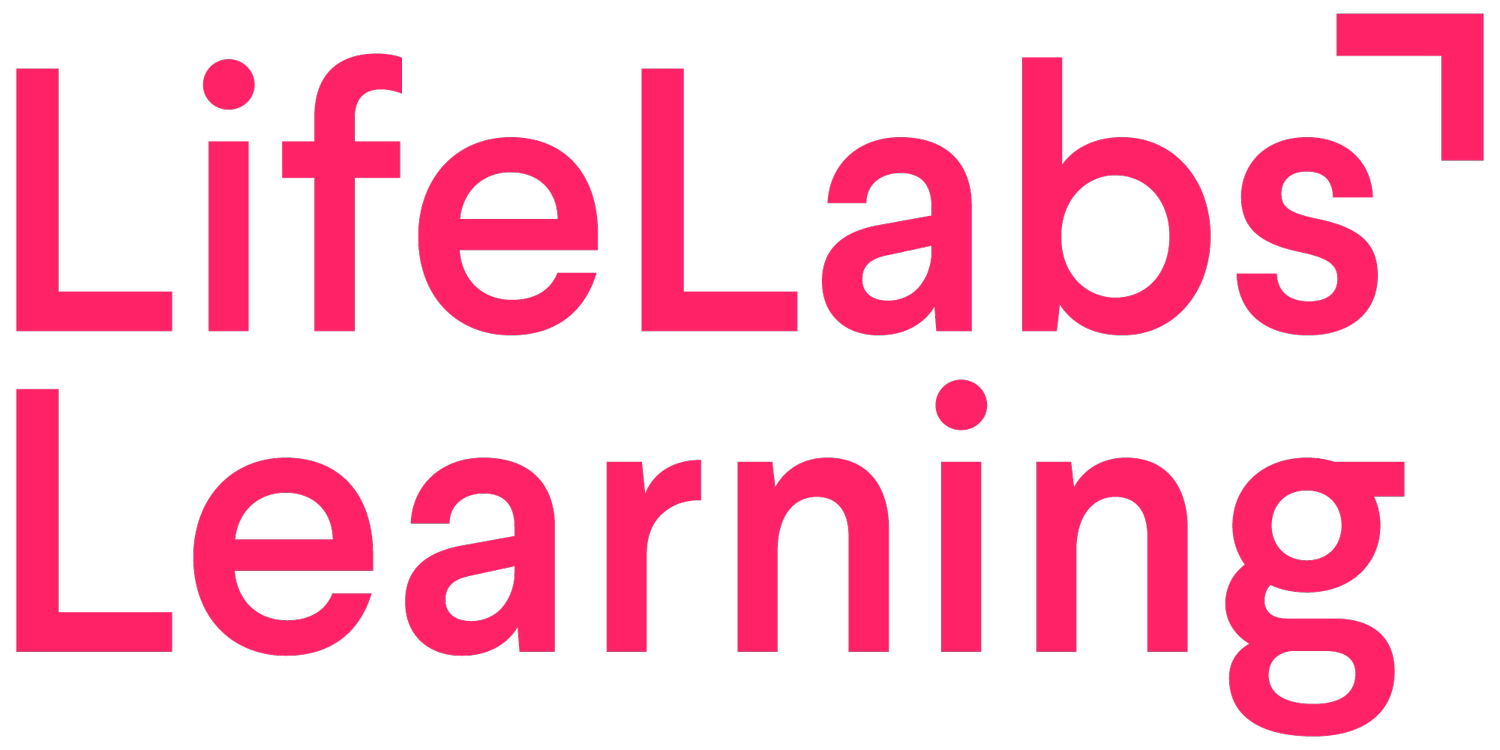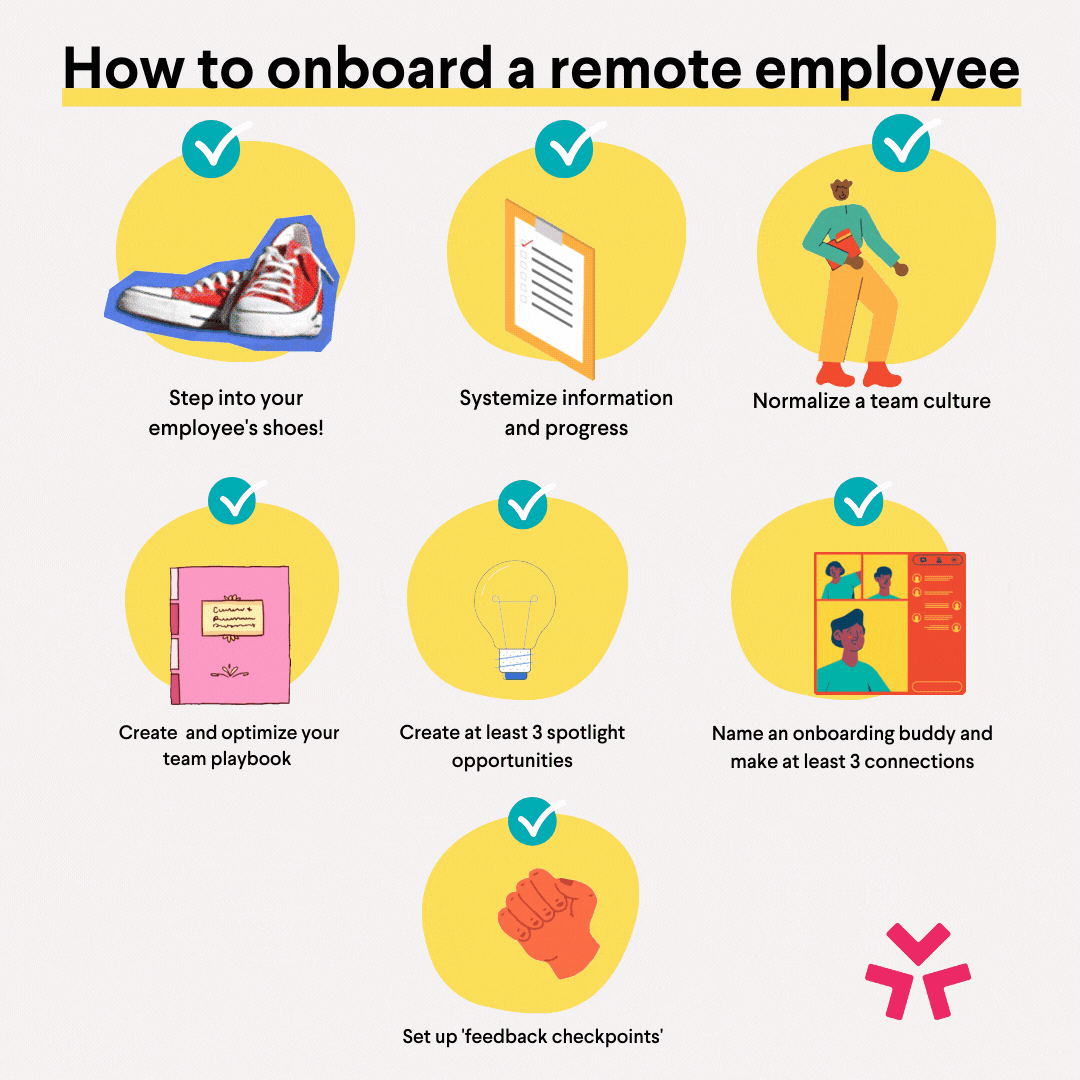How to onboard a remote employee
6-minute read
At LifeLabs Learning, we study what the best managers do differently when it comes to remote and in-person management, and while truly great managers are able to navigate both of these environments confidently, creating a comfortable and connected onboarding experience for remote employees does present some unique challenges many of us have never been faced with before.
Here are 7 small habits we've seen make a significant difference when it comes to onboarding new remote hires:
1) Do a 10-minute 'empathy prep session'
The best managers take a moment to step into their new employee's shoes and get a feel for where their head’s at. We suggest doing this strategically by conducting a 10-minute empathy prep session! Here’s how that might look. It’s natural for a new employee to feel nervous and want to make a good impression. As a manager, your ability to empathize with your new employees can help them feel confident and assured in their new role.
Your turn: Create a list of all things you'd be nervous about if you were starting a new job, and then follow it up with a few mitigations that would replace some of that nervousness with confidence. [create a graph that shows nervous about column/ mitigation column].
2) Create checklists and progress bars
The human brain can handle almost unlimited amounts of information, so long as it feels safe that the information is systematized and progress is being made. An easy way to help your employee’s brain is to create checklists, where they can physically check off tasks upon completion.
Your turn: Providing your new employee tasks buried in paragraphs of information doesn't create an ability to feel clear and focused. Instead, create clear deliverables with clear-cut completions, so that new folks are able to embrace a win.
3) Decide what you want to normalize and reinforce culturally
Each new employee on your team provides you with an opportunity to shift and solidify your culture. Our trainings at LifeLabs Learning help managers identify what norms they want to double down on for their teams. Onboarding then becomes a chance to initiate that message in a meaningful way. For example, if a manager wants their team to be more change-agile and resilient, onboarding is a great time to convey 'what your teams’ priorities are upfront using language like, “it's normal for us to …” or . “we respond to change by…”.
Your turn: Take 15 minutes to think through changes you'd like to see. Then, fill out a STOP, START, CONTINUE grid.
4) Create or optimize your team playbook
Ensuring that all of your team’s most important information is in one centralized location makes it easy for your new hire to know exactly where to look for reference.
Your turn: As a team, think through the pieces of information that feel most crucial for all employees to know, including implicit and explicit norms. This can include standard turn-around times, like how fast one is expected to return an email or complete an assignment and preferred communication channels (e.g., use Slack for this, use email for that).
Utilize this communication norms worksheet as a way to audit your team’s communication and get a complete overview of how often you’re interacting, what methods of communication you’re using, and the average length of your conversations. For more resources on managing distributed teams, you can also check out this handy little playbook.
5) Create at least 3 spotlight opportunities
Most companies make the mistake of using the first week to info-dump tons of information on the new hire without allowing the employee to share who they truly are with the rest of the team. Research on 'optimal distinctiveness' shows that while we want to feel like we belong to the group, we also want to feel like people are getting to know our authentic selves. So create balance by asking your new employee to share unique information with the group, like their favorite hobbies, where they come from, what unique perspectives they bring to the table, and what most excites them.
Your turn: Encourage new employees to set up some “get to know you” meetings with other teammates. You can even make it a part of their onboarding checklist, so they’ll know to prioritize it just as much as their other tasks.
6) Name an onboarding buddy and make at least 3 connections
Pick an informal person that your new employee can go to for all questions. It’s crucial that this person isn’t a new hire to ensure that the employee feels comfortable asking any question with full transparency. This is even more important for remote hires since the new person won't have colleagues around to ask questions as they come up spontaneously.
Your turn: Determine who your new hire’s onboarding buddy will be and make at least three additional cross-team connections for your new employee. Let them know you’ll be setting up a 15-minute informational interview with each of these team members so your new hire can get a better feel for how to work with other teams. Then, offer to co-create a list of questions your new hire can ask them — the goal here is to both help the employee directly increase their knowledge of the overall company while helping them feel embedded in a network.
7) Give them a task to make progress on, and set up 'feedback checkpoints’
Small wins matter more than we might realize, especially within the first couple of weeks. Think of an easy project your direct report can get to work on right away and easily make progress. This lets your new teammate practice collaboration and report-backs in action while allowing you to use this time as an experimental frame to establish regular feedback sessions.
Your turn: Normalize that feedback is a part of your team culture and is needed by setting up feedback checkpoints. For example, you should schedule check-ins for your employee after day 7, day 14, month 1, and month 3. [ draw a bar with checkpoints like this -- tell them to add it in now]. These check-ins shouldn't be about the tasks themselves but focused instead on how the overall process is working for them. Ask questions like:
- Who are you turning to for support?
- How clear do expectations feel, on a scale of 1-10?
- What would help move that score up 1 point?
- What is something I could do 10% better to support you in your role?
- What questions do you wish I would ask more often?
To learn more about effective strategies for managing remote hires, check out our Hybrid + Remote Work Playbook below.
The Hybrid & Remote Work Playbook
Get Hybrid Ready and transform your employees into nimble collaborators, ready to share in the responsibilities of change.
Instantly access the free playbook by click the link below


